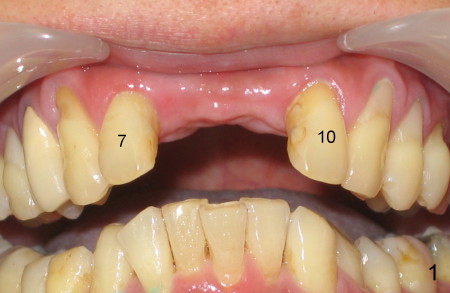
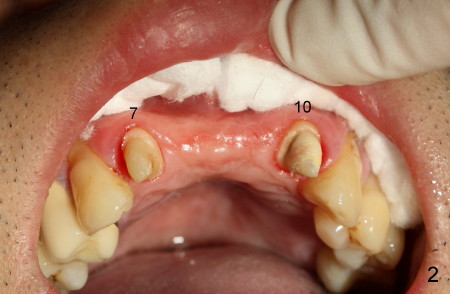
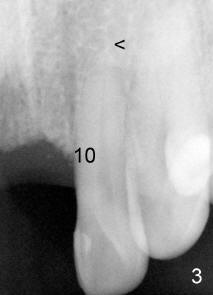
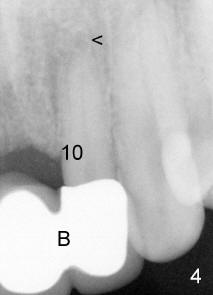
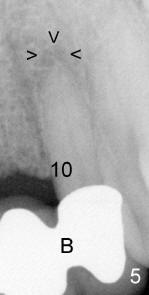
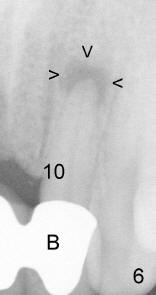
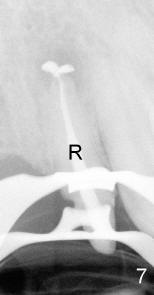
 |
 |
|||
 |
 |
 |
 |
 |
Dental Education Lecture: Drawback of Bridge
We have discussed drawbacks of bridge several times. Today we use another vivid example to demonstrate that we should avoid bridge as much as possible.
Mr. Fu is in his early fifties. He had motorcycle accident when he was 11 years old. Two front teeth finally gave up in his forties (between the teeth #7 and 10 in Fig.1). The best option is to place two implants, but his jaw condition is not so ideal for implants. So he chose bridge. We had to shave the relatively good teeth for the bridge (Fig.2). Gradually comes a big problem.
Fig.3 shows the tooth #10 before bridge. The root tip (arrowhead: <) is normal. Fig.4 shows the same tooth with pretty normal root tip (<) after bridge (B) is cemented about 1 year earlier. Two years after bridge delivery, there is a shadow (< in Fig.5) at the root tip, suggesting that the tooth #10 is dying. But Mr. Fu has no pain. After another two years, he develops severe pain and root tip shadow is enlarged (Fig.6). We have to remove the bridge temporarily to do root canal (R in Fig.7). The tooth #7 is alright (not shown).
This case shows that shaving tooth for bridge is a kind of trauma to the tooth, which was damaged in motorcycle accident long time ago. In time the tooth may die. We have to do root canal. All of these traumas and treatments will make the tooth weak, increasing the chance of losing it in the future. Implant therapy avoids this drawback. What should we choose when we lose one or more teeth?
Xin Wei, DDS, PhD, MS 1st edition 02/05/2011, last revision 09/28/2012